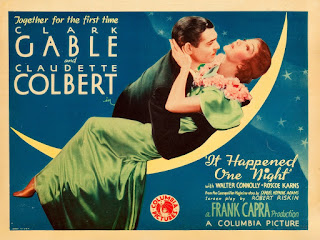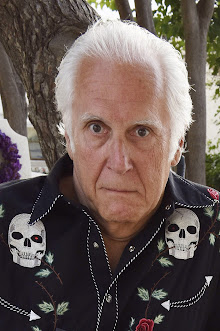Wendall -- every other Thursday
At the end of last year, my local library invited me to put together a presentation on romantic comedies for Valentine’s Day. Since I only had an hour and a half, I decided to focus on some of my favorite “cute meets” from the twentieth century, particularly the screwball ones.

Hepburn and Grant in Bringing Up Baby.
I didn’t know then that I would be editing rom/com clips with “go” bags by the door while Los Angeles, and perhaps democracy, burned. I felt incredibly guilty focusing on snappy banter and pratfalls, with upheaval and tragedy all around me.

Stanwyck and Cooper in Ball of Fire.
With everything that was going on in Los Angeles, I was prepared for turnout to be low to non-existent. To my surprise, almost all the chairs were full as everyone settled in for scenes from Bringing Up Baby, Ninotchka, and The Lady Eve, Pat and Mike and Born Yesterday, Charade, What’s Up Doc? and Starting Over, and as many others as I could get through in the time.

The first "official" romantic comedy. It won 5 Oscars, including Best Picture. 
An early "crime" rom/com.
 |
| An early "divorce" rom/com. |
The next day, I received this email from a kind attendee: “What a joy to just sit with others and laugh. I needed that. I suspect we all did.”
It set me to thinking how screwball comedy is actually all about chaos and how love can come from grappling with and accepting it in others and in the world around us.

Barbra Streisand IS chaos in What's Up Doc?
 |
| Some of the greatest Billy Wilder banter, ever. Love the tag line: "Don't pronounce it- see it!" |
Screwball comedy was largely born out of two things. First it was a response to the Production or Hays Code which sought to “clean up” the movies, after pressure from national political, civic, and religious groups threatened to shut Hollywood down. The code, which had a list of Don’ts and Be Carefuls was created in 1930 and was enforced in earnest by 1934.

Jean Harlow's lingerie and bedroom scenes in Red Dust were out.

Pajamas and physical fights were in, here between Carole Lombard and John Barrymore in Twentieth Century.
Second, it rose out of the need of those who were barely surviving the depression for stories about optimism, and redemption. So, to fulfill the “code,” filmmakers sublimated the sexual content of their comedies into couples who expressed their attraction through battling physically and verbally, straight through until the happy ending the public was starved for. And this sublimation + hope gives the films an energy that, in my opinion, has never been duplicated.

Double happy ending in The Philadelphia Story.
Screwball comedy, in the words of Ed Sikov, author of Screwball: Hollywood’s Madcap Romantic Comedies, is ". . .a whole genre developed around the perverse idea that love could only be enhanced by aggravation. . .The mating games played within their frames were testimonials to the fact that the choice of a partner--the most important choice people ever make -- is nothing less than earthshaking, an assertion of one's deepest instincts and destiny through love, a leap of faith into the void.... For these comedies were in essence voyages of self-discovery, fed by the Protestant work ethic: to make romance palatable, men and women had to earn it, and each other....Only by going through a terrible ordeal can genuine progress be made in a screwball comedy."

Possibly the greatest rom/com fight ever, in Nothing Sacred.
This tradition leads to some great slaps in the 80s, including in When Harry Met Sally and this one from Moonstruck:
https://www.youtube.com/watch?v=iLgMFwStTHc
The added bonus of these of the 30s and 40s films is their strong, hilarious female leads. Most of the romantic comedy heroines of the period were sophisticated, confident, and sexually and emotionally experienced. They were persuasive, impulsive, physical, and overwhelmingly fun. They embodied, in effect, the life force.

Irene Dunne runs circles around Cary Grant in The Awful Truth.

Barbara Stanwyck is a clever con woman in The Lady Eve.

Myrna Loy detects with William Powell in The Thin Man.
If you’re looking for women with “agency,” who completely own their sexuality, I dare you to find finer examples than Irene Dunne’s Lucy in The Awful Truth, Rosalind Russell’s Hildy in His Girl Friday or Barbara Stanwyck’s Jean in The Lady Eve and Sugarpuss O’Shea in Ball of Fire.
_NRFPT_01.jpg)
Barbara Stanwyck's cabaret moll in Ball of Fire.
 |
| Rosalind Russell's ace reporter in His Girl Friday. |
Writer/Director Preston Sturges created many of these women and he also understood the value of comedy. In Sullivan’s Travels he creates a film director who wants to do a “significant” film that reflects the times.

A vital tome for anyone who wants to write comedy screenplays.
Here’s an early scene from the film well worth watching:
https://www.youtube.com/watch?v=W7WmhkO_GWI
And here’s a bit of the script if you don’t have time to check out the clip:

"Maybe they'd like to forget that."
In the end, Joel McRae’s film director learns that laughter is a crucial commodity, never more so than in hard and terrifying times.
So, if you need a break from the news cycle, or you need to see something chaotic come out okay, I’d highly suggest some screwball. And of course, if you want to jump to the 80s, you can revisit my inspiration for the Cyd Redondo novels, Romancing the Stone.
Watch this space, since I'm inspired to put together a Rom/Com webinar for the spring.
-- Wendall

















Oh, Wendall, what fun this post is! So many great movies, and I think I've seen them all, and they all make me laugh. You've given me food for thought in your description of the screwball comedy heroines--what you said is certainly true for Barbara Stanwyck in Ball of Fire. What a wonderfully silly movie that is!
ReplyDeleteThank you so much, Kim! Yes, I'm always excited to show my students Ball of Fire. Sometimes I put the "conga" scene on just to cheer me up. I find that so many female characters now are strong ones, but so unlikable, so it sends me back to these. Thanks, as always, for commenting.
DeleteI had no idea that screwball comedies came about in reaction ether Hays code, but it makes perfect sense. I’ve seen every single movie you mentioned, but now I want to see them again. Preston Sturges is a huge inspiration and Sullivan’s Travels is my absolute favorite of all this films. Sometimes I should be doing more important things than making people laugh, but then I remember that prison scene in Sullivan’s Travels. All the faces of those desperate men laughing. Laughter is badly needed in times like these. Wendall, what you do is so important. You’re following a great tradition. The big studios have stopped making romantic comedies. But you haven’t.
ReplyDeleteThanks so much for posting, Haris! Your blurb in which you mentioned my name with Mr. Sturges's is still a high point of my life! I do believe in comedy and it's interesting because, with the exception of Sturges, almost all of the screwball writers fled from war-torn Europe, so I think it's a response to that as well. Haven't been writing since my publisher dropped the Cyd series, but have been trying to use these movies to start again. Thanks for reading, as always!
DeleteI think you're spot on! We need a lot of Screwball comedy at the moment!
ReplyDeleteMichael xxx
Delete